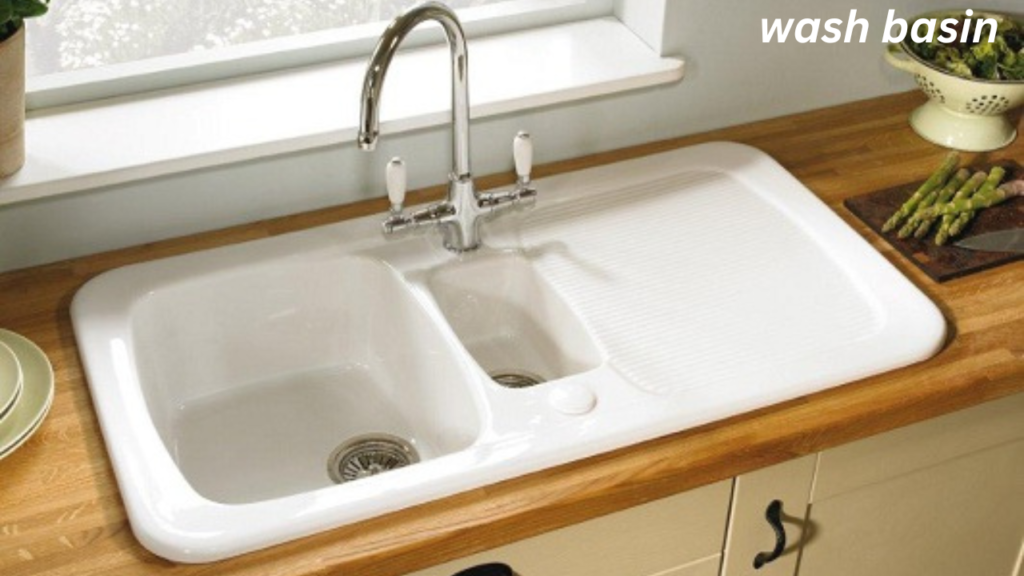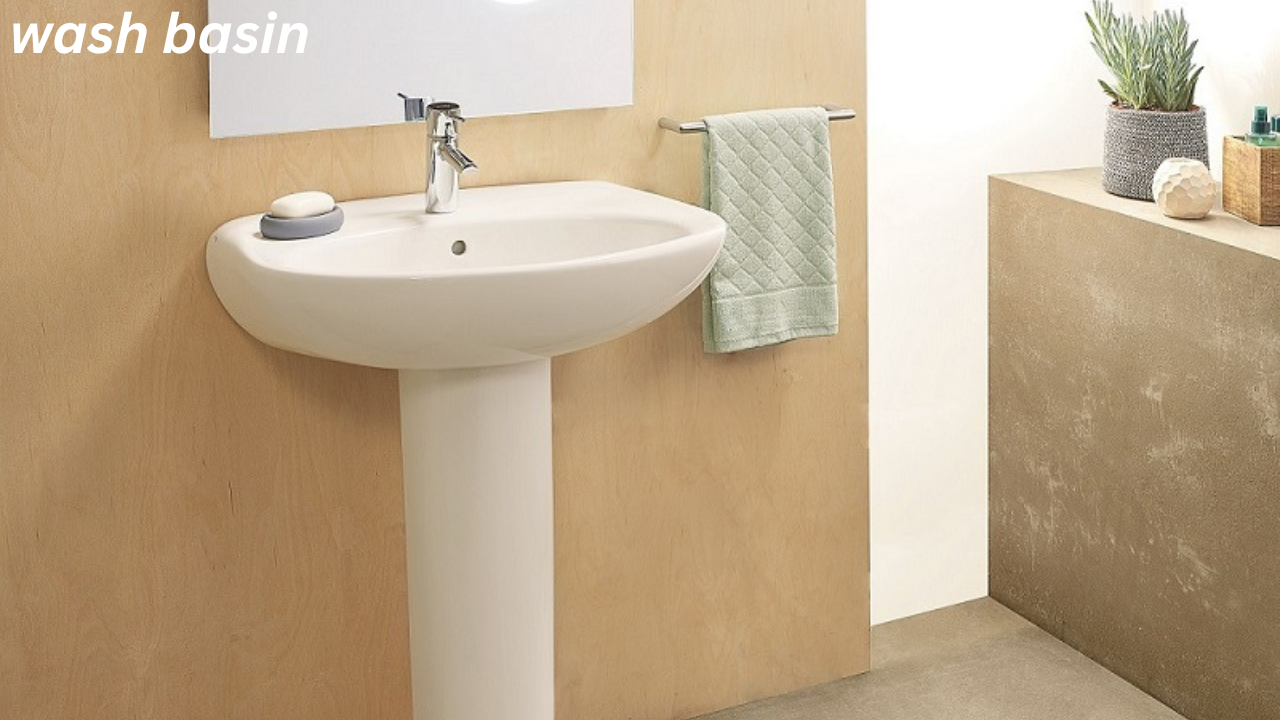When designing a bathroom or renovating your space, selecting the right wash basin is crucial for aesthetics and functionality. Wash basins come in various materials with unique properties, benefits, and drawbacks. This article will explore some of the most popular wash basin materials, including ceramic, stone, and more. Understanding the different options will help you make an informed decision that aligns with your design preferences and practical needs.
Ceramic Wash Basins: Classic and Durable
Ceramics For good reason, ceramic is one of the most commonly used materials for washbasins. Known for its versatility, durability, and classic appeal, ceramic basins are popular among homeowners and designers. Here’s a closer look at what makes ceramic washbasins so unique.
Benefits of Ceramic Wash Basins

- Durability: Ceramic is a highly durable material that can withstand daily use without losing its integrity. It is resistant to cracking, chipping, and staining, which makes it perfect for long-term use in a bathroom.
- Easy to Clean: Ceramic washbasins have a smooth, non-porous surface that prevents dirt, soap scum, and hard water stains from accumulating. This makes them extremely easy to clean and maintain.
- Affordable: Ceramic basins come in a range of prices, but generally, they tend to be more affordable compared to other materials like stone or glass.
- Variety of Designs: Available in an array of shapes, sizes, and finishes, ceramic wash basins offer plenty of design options to suit any bathroom style, from traditional to contemporary.
Drawbacks of Ceramic Wash Basins
- Prone to Chipping: While ceramic is durable, it can be prone to chipping or cracking if heavy objects are dropped. This could be a concern if you have young children or a busy household.
- Limited Luxury Appeal: While ceramic is widely popular, it may not have the high-end or luxurious appeal that some other materials, like stone or glass, can offer.
Stone Wash Basins: Luxurious and Unique
Stone wash basins bring a natural, earthy charm to any bathroom. Whether made of marble, granite, or limestone, they are luxurious, sturdy, and visually striking. These basins offer a sophisticated and unique look, especially with modern or minimalist bathroom designs.
Benefits of Stone Wash Basins
- Timeless Beauty: Stone basins, especially those made from marble or granite, have a timeless aesthetic that can elevate the overall look of any bathroom. The natural patterns and textures in the stone make each basin unique.
- Durability: Stone is an incredibly durable material. It can resist scratches and abrasions much better than ceramic and other materials. With proper care, a stone wash basin can last for decades.
- Eco-Friendly: Many stone basins are made from natural, sustainable materials. Choosing stone is an eco-friendly option if you’re looking for environmentally responsible design choices.
- Adds Luxury: Stone wash basins are often associated with luxury and elegance. They can transform a standard bathroom into a high-end sanctuary.
Drawbacks of Stone Wash Basins
- High Maintenance: While stone is durable, it requires regular maintenance. Stone basins need to be sealed to prevent water absorption and staining. Marble is prone to staining from acidic substances like lemon juice or vinegar.
- Cost: Stone-wash basins are typically much more expensive than ceramic ones. The price can vary depending on the type of stone used and the complexity of the design.
- Weight: Stone basins are heavy, making installation more difficult and expensive. It’s essential to ensure that the countertop or vanity can support the weight of the stone basin.
Glass Wash Basins: Sleek and Modern
Glass wash basins are a popular choice for modern and contemporary bathrooms. With their sleek, transparent, or frosted surfaces, glass basins create a visually light and airy feel in a bathroom. Available in many colors and styles, glass basins offer a unique way to add personality and style to your space.
Benefits of Glass Wash Basins
- Aesthetic Appeal: Glass basins are often chosen for their beauty. They can look particularly stunning in modern, minimalist bathrooms. Whether transparent, frosted, or colored, glass wash basins can make a bold statement in any bathroom.
- Easy to Clean: Like ceramic, glass wash basins have a non-porous surface, making them resistant to dirt, stains, and germs. Cleaning is quick and straightforward, requiring only regular wiping to maintain their shine.
- Light and Airy: Their transparency gives glass basins a sense of space and openness. This can be an excellent choice for smaller bathrooms where you want to create the illusion of more room.
- Variety of Styles: Glass washbasins come in various designs, from classic round shapes to more modern, abstract forms. You can also choose from multiple finishes like clear, frosted, or colored glass.
Drawbacks of Glass Wash Basins
- Fragility: Glass is more fragile compared to ceramic and stone. It can easily crack or shatter if struck by a hard object or dropped. Therefore, extra care is needed to prevent damage.
- Fingerprints and Water Marks: Glass surfaces are prone to showing water spots, fingerprints, and soap residue. Regular cleaning is essential to keep the basin looking pristine.
Stainless Steel Wash Basins: Practical and Modern
Stainless steel wash basins are typically used in more industrial or modern bathroom designs. Known for their sleek, clean appearance, stainless steel basins are durable and easy to maintain, making them a popular option for contemporary spaces.
Benefits of Stainless Steel Wash Basins
- Durability: Stainless steel is resistant to rust, corrosion, and staining. It’s one of the most durable materials for wash basins, perfect for high-traffic bathrooms.
- Low Maintenance: Stainless steel is easy to clean and resistant to the buildup of grime or stains. A simple wipe-down with a non-abrasive cleaner is all it takes to maintain its appearance.
- Modern Look: Stainless steel basins offer a sleek look that works well in contemporary and industrial-themed bathrooms.
Drawbacks of Stainless Steel Wash Basins
- Prone to Scratches: While stainless steel is durable, it can be prone to scratching and denting if not handled carefully.
- Cold Appearance: Stainless steel can sometimes give off a cold, impersonal appearance, which may not suit all bathroom styles.
Concrete Wash Basins: Trendy and Customizable
Concrete wash basins are gaining popularity for their modern, industrial look. They can be molded into various shapes and sizes, allowing for high customization. Concrete basins are especially popular in contemporary and minimalist bathrooms.
Benefits of Concrete Wash Basins
- Customizable: Concrete basins can be made to fit your specific style. They can be molded into almost any shape, creating unique and artistic designs.
- Durability: Concrete is incredibly durable and can withstand heavy usage. It’s also resistant to chipping and cracking, though it requires regular sealing.
- Trendy Aesthetic: TConcretewash bbasins’ industrial appeal gives your bathroom a unique, edgy look that’s perfect for modern designs.
Drawbacks of Concrete Wash Basins
- Heavy: Like stone, concrete basins may require reinforced support during installation.
- Porous: Concrete can be porous and prone to staining if not properly sealed. Regular maintenance is needed to keep the basin in good condition.
Conclusion
When selecting a wash basin for your bathroom, consider your style, budget, and maintenance preferences. Ceramic basins offer timeless durability and ease of cleaning, while stone basins provide a luxurious, natural aesthetic. Glass basins are sleek and modern but fragile, and stainless steel offers a contemporary and low-maintenance option. Concrete basins, conversely, are customizable and trendy, ideal for those seeking a unique, industrial look.
FAQs
Which is the most durable wash basin material?
Stone, such as granite or marble, is one of the most durable materials for wash basins, followed by stainless steel and ceramic.
How do I maintain a stone wash basin?
Stone wash basins require regular sealing to prevent staining and water absorption. To maintain their appearance, avoid using acidic cleaners and wipe up spills immediately.
Are glass wash basins easy to clean?
Yes, due to their non-porous surface. Regular wiping with a non-abrasive cleaner will keep them looking shiny and streak-free.
Are concrete wash basins customizable?
Yes, they can be molded into various shapes, sizes, and finishes, allowing for a high degree of customization to fit your bathroom design.
What are the disadvantages of ceramic washbasins?
While ceramic washbasins are durable, they can be prone to chipping if impacted by heavy objects. They also may not provide the luxury appeal of materials like stone or glass.
You May Also Read: https://ventsworlds.com/diyuehe/

